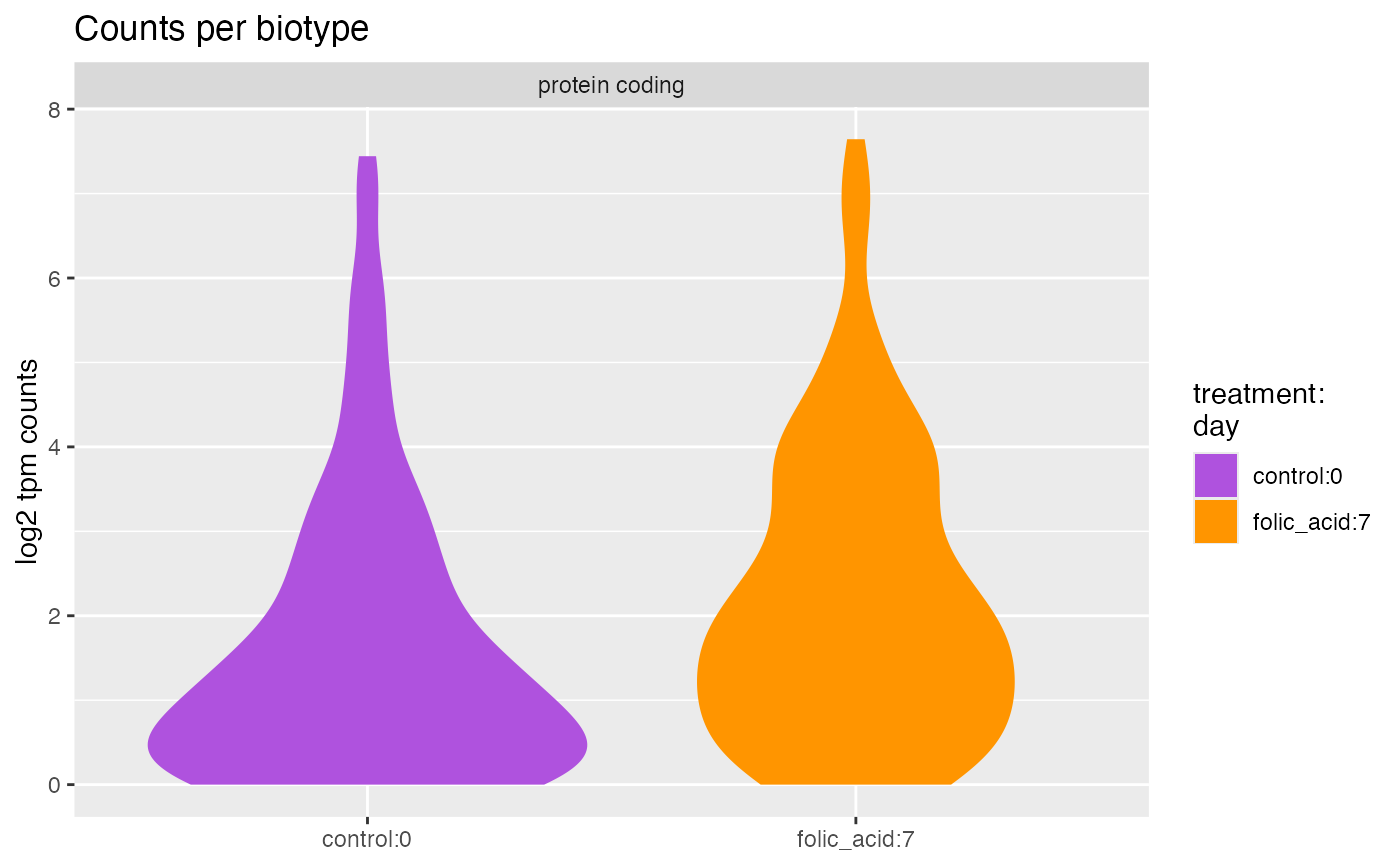Plot counts per biotype
Source:R/AllGenerics.R, R/plotCountsPerBiotype-methods.R
plotCountsPerBiotype.RdPlot counts per biotype
Usage
plotCountsPerBiotype(object, ...)
plotCountsPerBroadClass(object, ...)
# S4 method for bcbioRNASeq
plotCountsPerBiotype(
object,
normalized = c("tpm", "sf", "fpkm", "vst", "rlog", "tmm", "rle"),
...
)
# S4 method for bcbioRNASeq
plotCountsPerBroadClass(
object,
normalized = c("tpm", "sf", "fpkm", "vst", "rlog", "tmm", "rle"),
...
)Arguments
- object
Object.
- normalized
character(1)orlogical(1). Normalization method to apply:FALSE: Raw counts. When using a tximport-compatible caller, these are length scaled by default (seecountsFromAbundanceargument). When using a featureCounts-compatible caller, these areinteger.
tximport caller-specific normalizations:
"tpm": Transcripts per million.
Additional gene-level-specific normalizations:
TRUE/"sf": Size factor (i.e. library size) normalized counts.
SeeDESeq2::sizeFactorsfor details."fpkm": Fragments per kilobase per million mapped fragments.
Requiresfast = FALSEinbcbioRNASeq()call and gene annotations inrowRanges()with definedwidth().
SeeDESeq2::fpkm()for details."vst": Variance-stabilizing transformation (log2).
Requiresfast = FALSEto be set duringbcbioRNASeq()call.
SeeDESeq2::varianceStabilizingTransformation()for more information."tmm": Trimmed mean of M-values.
Calculated on the fly.
SeeedgeR::calcNormFactors()for details."rle": Relative log expression transformation.
Calculated on the fly.
SeerelativeLogExpression()for details."rlog": Deprecated. Regularized log transformation (log2).
No longer calculated automatically duringbcbioRNASeq()call, but may be defined in legacy objects.
SeeDESeq2::rlog()for details.
Note that VST is more performant and now recommended by default instead.
Note that
logical(1)support only applies tocounts(). Other functions in the package requirecharacter(1)and usematch.arg()internally.- ...
Additional arguments.
Examples
data(bcb)
## bcbioRNASeq ====
plotCountsPerBiotype(bcb)
#> ℹ Using "tpm" counts.
#> ℹ 63 / 100 features passed `perRow` >= "1" cutoff.
#> → Applying `log2(x + 1L)` transformation.
